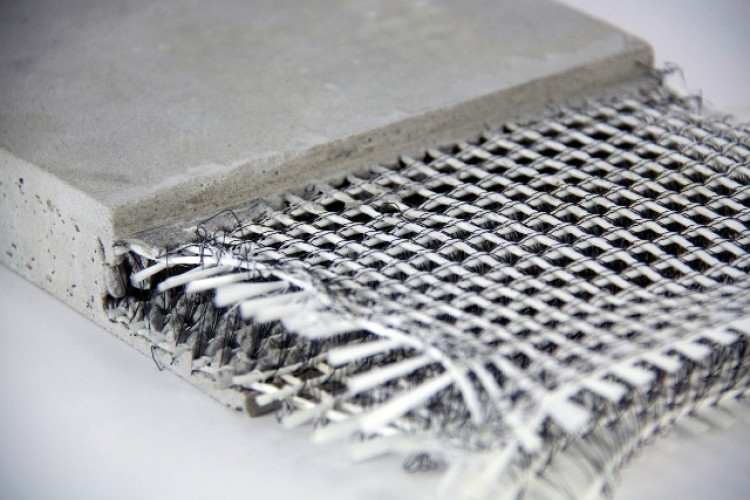The Advantages of Using Composites in Building And Construction Products
Wiki Article
Unlocking the Ecological Benefits of Recycled Compounds in Building And Construction and Layout
In the world of building and construction and design, the utilization of recycled composites holds considerable assurance for boosting sustainability techniques and decreasing environmental influence. The change in the direction of a more sustainable future in these markets pivots on unlocking the complete possibility of recycled compounds.
Ecological Influence Decrease
The reduction of environmental impact via the usage of recycled compounds in building and design plays a vital function in lasting methods. By incorporating recycled compounds right into building products, the building and construction market can significantly lower its carbon impact and contribute to an extra green future. These lasting materials, made from repurposed plastics, timber fibers, or other recycled elements, use a practical alternative to traditional building and construction materials without compromising on top quality or durability.
Recycled compounds assist divert waste from garbage dumps and minimize the requirement for extracting resources, hence preserving all-natural resources. In addition, the production process of these composites typically takes in less power and sends out less greenhouse gases contrasted to creating virgin materials (composites). This change towards making use of recycled composites not just reduces ecological harm yet also advertises a round economic situation by motivating the reuse of products that would otherwise be thrown out
Waste Minimization
With an emphasis on reducing waste in building and construction and style, the integration of recycled composites supplies a sustainable solution to minimize ecological impact. Waste reduction is an essential aspect of sustainable techniques, and making use of recycled composites provides a chance to achieve this objective efficiently. By utilizing products that have currently served their preliminary purpose, such as recycled plastics or recovered timber fibers, the construction and style industries can substantially decrease the quantity of waste produced and sent out to garbage dumps.Recycled compounds have the prospective to draw away considerable quantities of waste from standard disposal approaches, adding to a more round economic climate where sources are used efficiently. Furthermore, the production procedure of recycled compounds frequently takes in much less power and generates less emissions contrasted to virgin products, better minimizing the ecological impact of building and construction and design projects.
Executing waste minimization methods via the incorporation of recycled composites not only aids in saving all-natural sources however also advertises a much more sustainable method to building and making for a greener future.
Power Conservation
Incorporating recycled compounds not just lessens waste in building and style but also plays an important role in boosting power conservation techniques within the sector. The usage of recycled composites in building can considerably contribute to power conservation through numerous ways. The production of virgin products normally needs significant energy inputs, whereas making use of recycled composites eats less energy, therefore decreasing total energy usage. Additionally, including recycled composites can add to better insulation residential or commercial properties in structures, reducing the requirement for too much heating or air conditioning, and as a result decreasing power usage for climate control. Furthermore, the lightweight nature of several recycled composites can cause lighter structures, needing less power for transport and installation. By advertising the use of recycled composites in building and construction and layout, the industry can make significant strides towards attaining energy effectiveness and lowering its carbon footprint, ultimately adding to a more sustainable developed setting.Carbon Impact Decrease
Enhancing sustainability methods through the utilization of recycled compounds in building and construction and style substantially decreases the carbon footprint of the sector. By integrating recycled materials into the manufacturing of compounds, the demand for virgin resources decreases, resulting in lower energy usage and greenhouse gas emissions connected with traditional production procedures. This decrease in carbon impact is vital in combating environment adjustment and advertising an extra ecologically friendly approach to building and construction and style.Additionally, using recycled composites also aids in diverting waste from landfills, therefore reducing the environmental effect of disposal and advertising a circular economic situation. The carbon footprint decrease achieved with the adoption of recycled composites straightens with the global press towards lasting practices and the reduction of industrial discharges. It showcases a commitment to liable resource monitoring and a shift in the their explanation direction of greener options in the building and layout industries. Inevitably, by prioritizing the assimilation of recycled compounds, the industry can make considerable strides in lowering its carbon impact and adding to a much more lasting future.
Lasting Future
The combination of recycled composites in construction and layout not only addresses immediate ecological problems however additionally lays a solid structure for a lasting future in the market. By including recycled compounds into structure materials and products, the building and construction and layout industries can dramatically minimize their dependence on virgin resources, resulting in an extra circular economic situation. This change towards sustainability is essential for minimizing the environmental effect of traditional building practices, which commonly cause high levels of waste generation and source depletion.

Conclusion
In final thought, recycled composites provide substantial ecological advantages in building and construction and layout by reducing environmental impact, lessening waste, conserving energy, reducing carbon impact, and advertising a sustainable future. Embracing making use of recycled composites can add to a much more environmentally-friendly method to structure and design, eventually resulting in a more lasting and greener future for all.The decrease of environmental impact through the usage of recycled compounds in building and design plays a critical function in sustainable practices.With an emphasis on reducing waste in construction and layout, the combination of recycled composites offers a lasting solution to reduce ecological influence. By promoting the use of recycled compounds in building and anonymous construction and style, the market can make significant strides in the direction of accomplishing power effectiveness and reducing its carbon impact, eventually adding to a much more lasting developed environment.

Report this wiki page